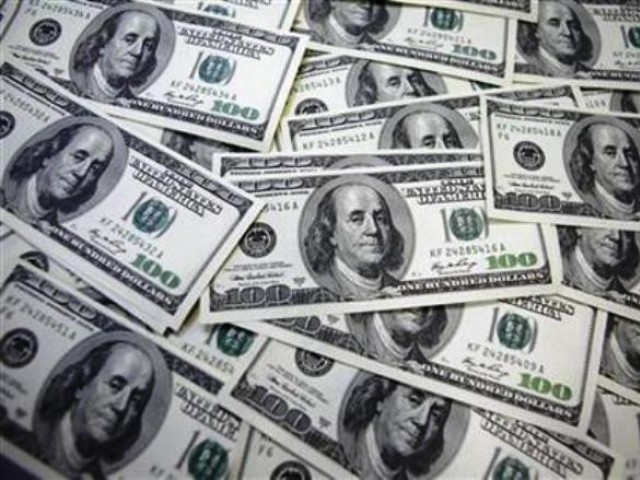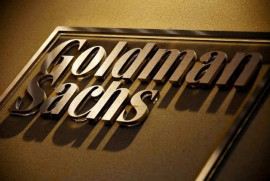
Pakistan has been tapping unconventional and expensive sources to build its foreign currency reserves and financing the budget, as it borrowed $513 million from commercial banks including a relatively new entity, Noor Bank.
The push towards these unconventional sources comes on the back of decreasing foreign economic assistance from traditional partners.
The inclusion of Noor Bank PJSC, established by Dubai government about seven years ago, in the list of lenders surprised many. It shows the government is increasingly relying on unconventional and expensive funding to meet its budget and building foreign currency reserves, according to experts.
Moody’s report: International bonds weaken Pakistan’s debt affordability
Pakistan borrowed $263.3 million from Noor Bank in September, according to foreign economic assistance statistics for the July-September period of 2015 and compiled by the Economic Affairs Division. The government had to borrow the money to meet the net international reserves (NIR) target set by the International Monetary Fund (IMF), according to officials of the Finance Ministry. They said $263.3 million were raised at 4.75% interest rate. The officials said that Prime Minister Nawaz Sharif has delegated his powers to the Finance Ministry to raise funds without competitive bidding for a short-term period.

The borrowings from Noor Bank were not part of the original annual financing plan the government had prepared in June this year, indicating huge firefighting that the government is undertaking to balance the books.
Pakistan to get another $502m IMF loan
In addition, the government also borrowed $250 million from a consortium of commercial banks against budgetary estimates of $200 million. The officials said the borrowing from the consortium was a rollover. The government also borrowed $34.8 million from the Economic Cooperation Organization (ECO) Trade and Development Bank. In the same month, it raised $500 million by floating a Eurobond.
Cumulative borrowings through Eurobonds and commercial banks in July-September period stood at $1.05 billion, which were almost two-thirds of the total foreign economic assistance of $1.69 billion in this period. The $1.69 billon borrowings were 18.5% of annual estimated economic assistance of $9.2 billion for the current fiscal year 2015-16.
Shifting balance
The refusal by the Asian Development Bank and World Bank to approve $1 billion lending for energy sector reforms in the first quarter pushed the government towards expensive borrowings. These lenders had refused to give loans until the government took corrective measures in the energy sector.
Pakistan agrees to slap billions in new taxes
The World Bank will approve $500 million on November 15 while the ADB is expected to clear $400 million on November 20 after successful loan negotiations, said Finance Minister Ishaq Dar on Thursday.
The other worrisome element was shrinking project financing by the ADB, World Bank and bilateral traditional sources. However, the government says that fewer disbursements were cyclical in nature and Pakistan has good relations with all development partners that are continuously funding the schemes.
Against the annual estimates of $1.8 billion, World Bank, the country’s largest lender, gave just $54 million or 3% of the total estimates in July-September.
The ADB - the other strategic financial partner - gave $83.2 million or 8% of the annual estimates of $1.1 billion for project financing. China, which is expected to replace World Bank as the largest lender this year, also gave $255.6 million or 8.3% of annual estimates.
Pakistan has received an estimated $3.1 billion from China during the current fiscal year.
Inconclusive IMF talks extended for two days
Sticky situation
Less than anticipated disbursements for project financing by the traditional lenders indicate serious problems that the country is facing in managing development schemes. Implementation remains a problematic area.
The Islamic Development Bank, which is expected to give $1.3 billion this fiscal year, disbursed $82.7 million or 6.6% of the annual estimates.
Out of $1.69 billion that Pakistan received in the first quarter, an amount of $147.3 million was on account of grants. The United Kingdom has replaced United States as the country’s largest donor. It disbursed $87 million in grant for social sector.
The US gave $41.8 million in July-September period, according to the EAD compiled statistics.
Published in The Express Tribune, November 8th, 2015.
Like Business on Facebook, follow @TribuneBiz on Twitter to stay informed and join in the conversation.



1719211536-0/BeFunky-collage-(81)1719211536-0-165x106.webp)



















COMMENTS
Comments are moderated and generally will be posted if they are on-topic and not abusive.
For more information, please see our Comments FAQ